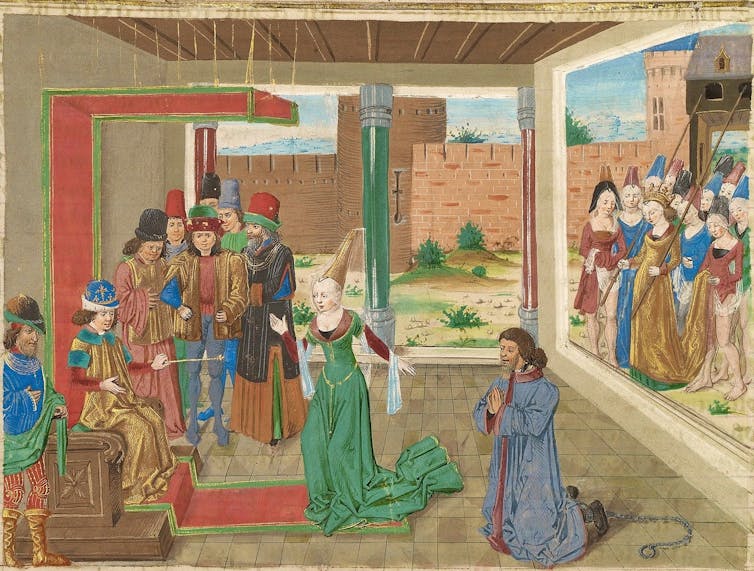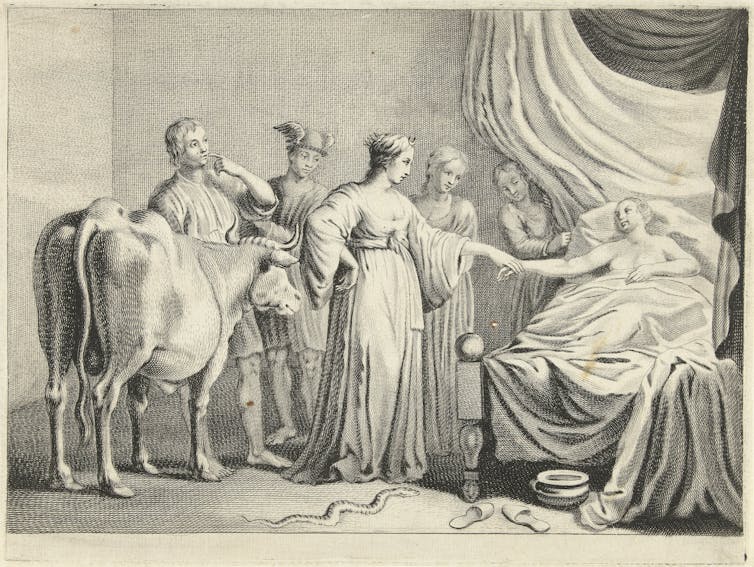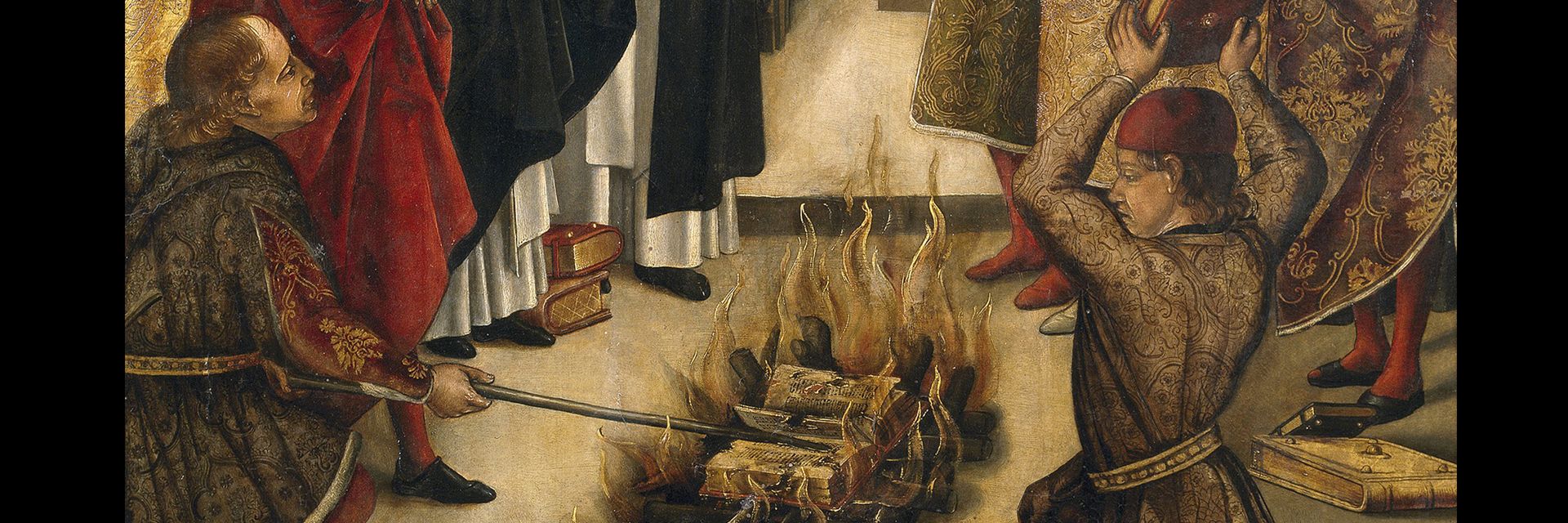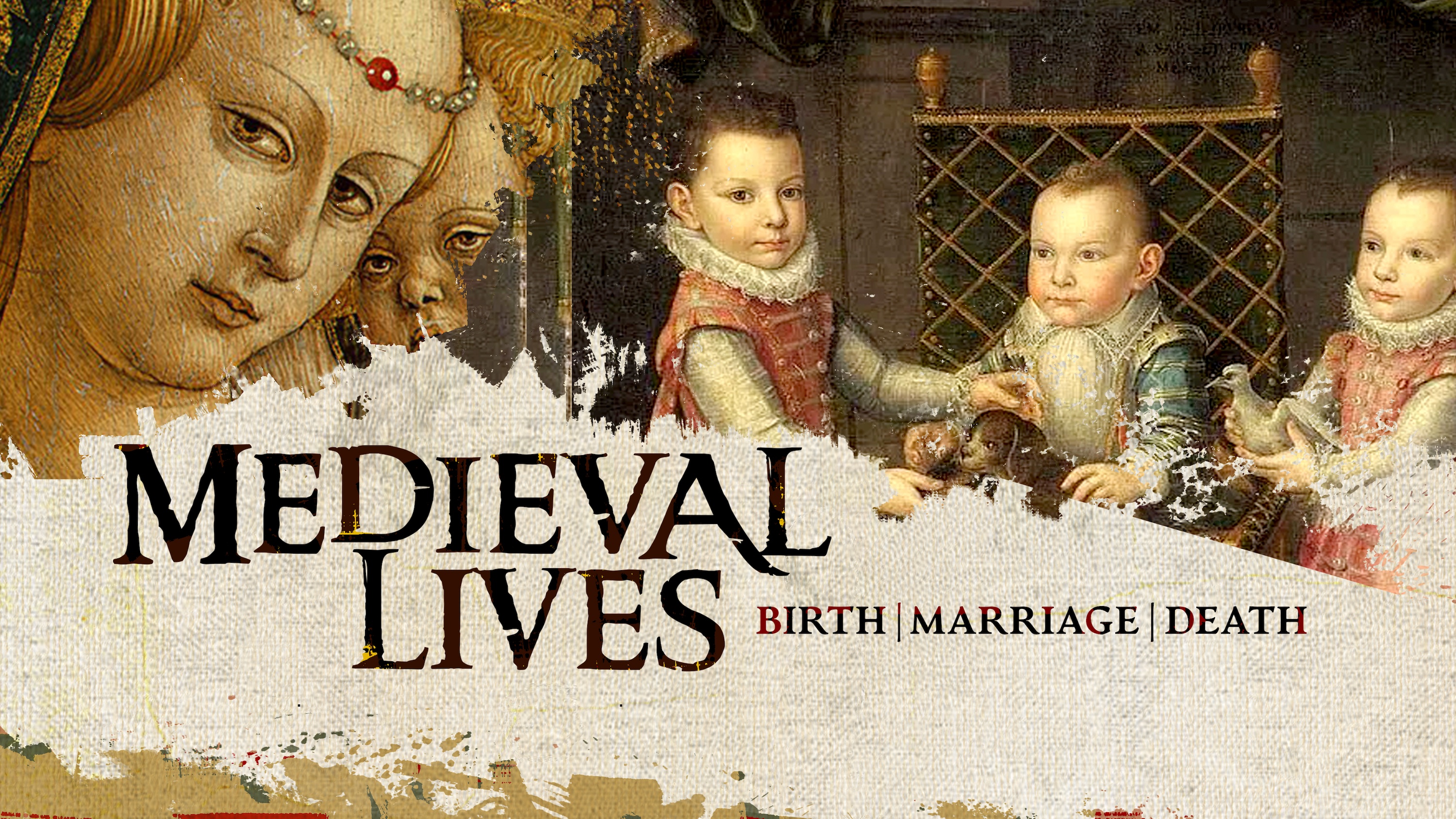Jessica Hines is a Visiting Assistand Professor English at Whitman College.
This article originally appeared in  on May 16, 2024.
on May 16, 2024.
◊
Americans have been challenging books at an unprecedented rate. According to the American Library Association, people requested that more than 4,200 titles be removed from public and school libraries in 2023, the highest number in a single year since the ALA started tracking more than 20 years ago.
These challenges are compounded by new and proposed legislation in many states. Florida’s Parental Rights in Education Act, for example, prohibits schools from discussing sexual orientation or gender identity in many grades, while a 2022 Missouri law makes sharing “explicit sexual material” in schools a misdemeanor. Such mandates have led librarians to pull materials from shelves.
Material written by or about LGBTQ+ people is often at the heart of book challenges and legislation.
“More and more, we’re seeing challenges that say, simply, This book has a gay character, or, This book deals with L.G.B.T.Q. themes, even if it has no sexuality in it,” Deborah Caldwell-Stone, director of the ALA’s Office for Intellectual Freedom, told The New York Times in April 2024.
As a scholar of medieval literature and religion, I’ve been struck by the resonances between modern and medieval censorship of queer texts. Both have been shaped by a sort of “Don’t Say Gay” mindset: an assumption that even seeing or talking about LGBTQ+ themes poses a threat to children and society, regardless of how it’s done.
Learn more about the lives of medieval Europeans in this engaging MagellanTV documentary.
‘Unmentionable’ Acts
Starting around the 11th century, European theologians and writers classified homosexual desire and sex as “sodomy,” a moral sin. Unlike more modern definitions of sodomy, the medieval category was wide-ranging. It was particularly associated with sexual or gendered sins “against nature” and often known as the “crimen nefandum,” the unmentionable vice.
Theologians, preachers and authors of courtly guidebooks expressed outrage at people’s continued “discovery” of sodomy and stressed the importance of suppressing any and all mentions of “deviant” sexuality.
This censorship was caught up in the sweeping clerical and episcopal reforms of the 11th and 12th centuries, although it extended far beyond. In these reform movements, sodomy was often represented as a threat to social stability because it upset gender hierarchies. Intimate relationships between male members of the clergy was thought to encourage corruption. Homosexual sex was seen as dangerous because it reversed strict gender expectations: passive sexual and social positions for women and active ones for men.
From Celebration to Silence
This fear of sodomy manifested in a silencing of homoerotic and homosexual material. Scholars debate the extent to which texts accused of being about “sodomy” were destroyed purely for its sexual content, because such charges were often used to justify destroying books authorities wanted to censor.
The more common and insidious form of censorship was erasure and modification, which took a variety of forms. In adapting and commenting on material from Greek and Roman history, medieval authors selectively chose not to include material describing homosexual intimacy and intercourse.

‘Bagoas Pleads on Behalf of Nabarzanes,’ a Persian commander, in a 15th century painting. Bagoas is depicted as a noble woman. (Source: Collection of the Getty Center, via Wikimedia Commons)
Histories of Alexander the Great transformed his eunuch lover Bagoas into a woman, Bagoe. Stories about queer relationships in the Roman poet Ovid’s “Metamorphoses” were reframed, turning romantic endings into cautionary tales.
One of Ovid’s tales describes how Iphis, assigned female at birth but raised as a boy, falls in love and finds happiness with a beautiful young woman named Ianthe. In “The Moralized Ovid,” a medieval version, the commentator tacks on a story that describes how such gender “trickery” is always found out and punished.
A similar pattern exists in original texts by medieval authors. Some stories prominently featured what people today would consider queer narratives: kissing games between men or young knights who wrestle with their gender identity. These stories might even seem to celebrate homoerotic relationships and gender transformation for hundreds of lines, only to resolve in abrupt endings that “corrected” them.
One particularly jarring example, the “Roman de Silence,” details the adventures of a heroic knight, Silence, who was assigned female at birth but lived most of his life as a man. At the poem’s conclusion, Silence is made to give up his knighthood, marry a king, and forced into a life of silent passivity.
Condemn, or Keep Quiet?
So provocative was the “unmentionable vice” that there was a reluctance to address these themes in medieval texts and teaching, even to critique them.
Normally, priests would counsel their parish about particular sins and how to avoid them. In “Instructions for Parish Priests,” however, 14th-century English preacher and writer John Mirk indicated priests should not discuss “sins against kynde,” or nature: “You shall your parish nothing teach,/ Nor of that sin no thing preach.”
Other texts were more explicit in their condemnation, like the 12th-century poet and theologian Alain de Lille’s “De planctu naturae,” or “The Complaint of Nature.” The poem launches a blistering attack, using metaphors that at once describe, condemn and obscure homosexual desire – for example, “He strikes on an anvil that admits no seeds.”
By controlling access to information, these medieval theologians and writers thought they could end “deviant” sexualities and gendered behavior. According to this logic, to never speak of sodomy – not even to condemn it – meant that no one would ever know of it and never engage in it.
Records in Plain Sight
The truth is that records of queer people and their lives from the Middle Ages are more plentiful than many people realize.

Iphis lies in bed while the goddess Isis takes her hand and changes her into a young man so she can marry Ianthe. (Source: Collection of Rijksmuseum, via Wikimedia Commons)
Some historians previously overlooked or even deliberately obscured evidence of medieval queer history, literature and art. Trial records of medieval sex workers such as Eleanor Rykener speak to the ways people transgressed categories of gender and sexuality, often without evidence of criminal punishment. Saints’ lives carry the records of holy men and women who chose to live their lives according to their religious calling and not the gender they were assigned at birth. Works of mystical theology, such as Julian of Norwich’s “Showings,” described visionary experiences where God appeared as both man and woman, masculine and feminine, mother and father. Many religious devotional texts depicted monks tenderly embracing each other and included images of Christ giving birth to the church through his wounds from the crucifixion.
For all that there were efforts to silence the diverse range of medieval thought and experience, narratives that tested the boundaries of gender, sex and desire proliferated.![]()
Ω
Title Image: Failed attempt by Cathars to burn St. Dominic's books. Oil on panel painting (detail) by Pedro Berruguete, c. 1493-99 (Source: Collecton of Museo del Prado, via Wikimedia Commons)


